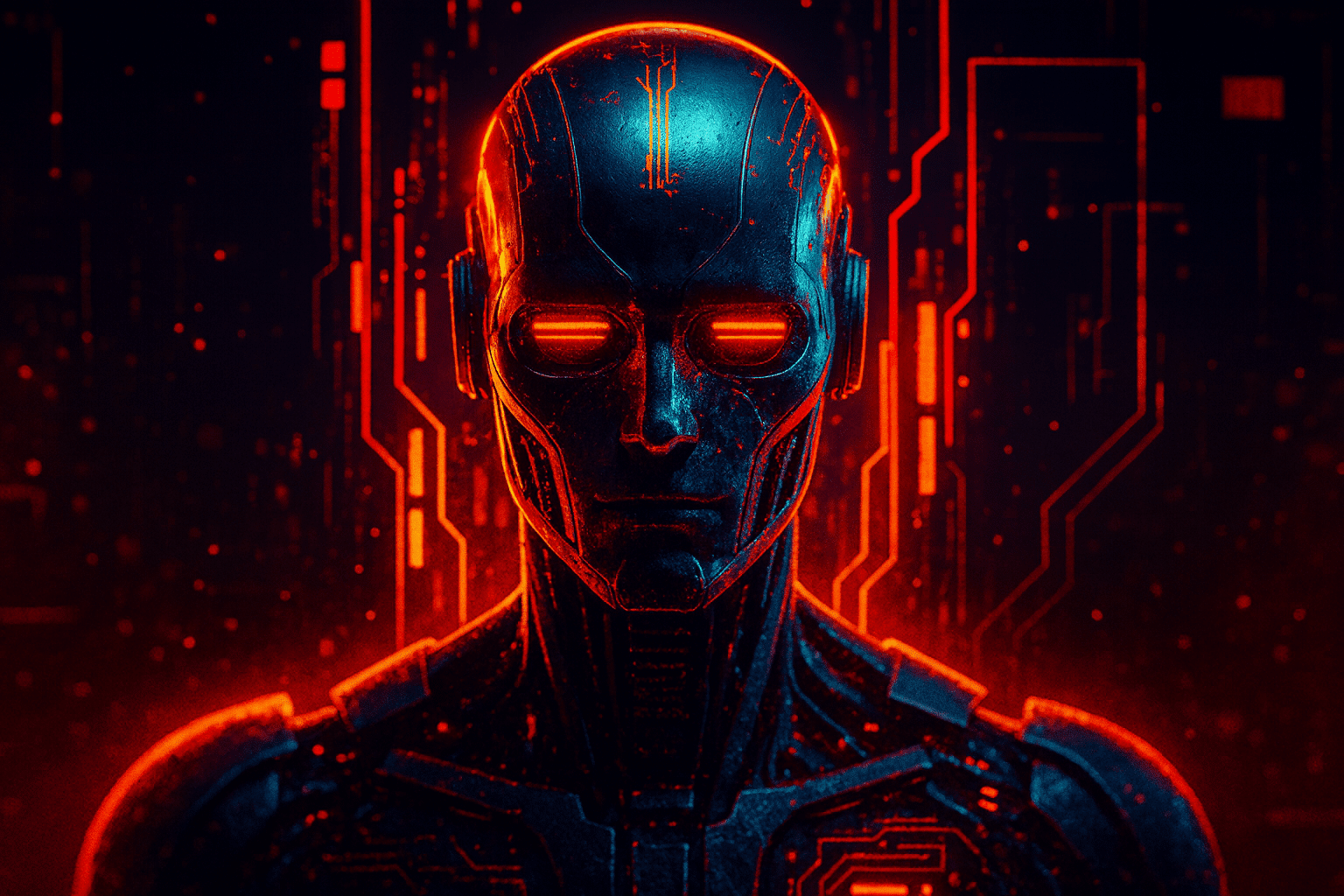Forget Your Job: AI Might Be After Your Security
25 September, 2025 | Current Blog General
Everyone is talking about AI taking jobs. Fair enough. But what if that is not the most pressing risk?
This article was originally published on finsurtech.ai, where I share unfiltered insights on leadership, innovation, and the future of insurance.
While the world debates automation and employment, a far more dangerous threat is unfolding: AI-powered cyberattacks.
In today’s digital arms race, AI is more than a tool – it is a weapon, and a potentially devastating one. What used to be handled by human analysts is now being overtaken by intelligent, self-learning systems, capable of launching attacks faster, smarter, and at unprecedented scale.
The same technology we built to defend ourselves is now being turned against us.
In this article, we dive into the dark side of AI: the rise of automated threats, the vulnerabilities they exploit, and the impact they could have on our economy, our institutions, and our lives.
A New Generation of Threats
Arguably, AI is speeding things up, but not always for the better. Today’s cyberattacks are more sophisticated, more targeted, and, most alarmingly, more automated. What once took months of reconnaissance and manual effort can now be executed in minutes with the help of generative AI.
Attackers are now using AI to craft highly personalised phishing messages, often in multiple languages. By mimicking writing styles and context, these emails appear strikingly real, making them far more likely to succeed.
They also use AI to clone executive voices and faces, enabling deepfake scams. A fake video call from a “CEO” can trick employees into approving fraudulent transactions.
Polymorphic malware is another weapon—malicious code that constantly changes to avoid detection. Traditional antivirus tools cannot keep up with these shapeshifting threats.
AI accelerates the discovery of zero-day vulnerabilities—undetected flaws in software. These are like secret doors into a system, wide open for attackers until discovered and patched.
Finally, attackers are poisoning AI training data, corrupting the systems meant to protect us. By feeding AI false inputs, they cause it to ignore real threats or flag harmless actions as dangerous.
In the financial sector alone, leaders are raising the alarm. A 2025 report by Business Insider revealed that 80% of banking cybersecurity executives feel unprepared for the rise in AI-driven attacks, despite increasing their budgets year over year.
Impact Across Industries
The impact of these threats is both broad and deep.
In financial services, the rise of generative AI has supercharged fraud. Deepfake-powered scams have already led to high-profile losses, and analysts warn that AI-enabled fraud may quadruple global damages by 2027.
In critical infrastructure, the convergence of operational technology (OT) and IT systems has opened the door for attackers to use AI in targeting energy grids, transport systems, and even water utilities. Researchers are now urging hybrid human-AI response systems to anticipate these evolving threats.
In insurance and risk, AI-generated synthetic identities are posing challenges to underwriting and claims systems. As identity becomes easier to fake, trust becomes harder to verify. Imagine the impact on risk assessment or claims fraud. As an industry, we were struggling to prevent basic fraud. Are we going to keep up with AI-powered fraud?
And across all sectors, existing cryptographic systems are facing dual threats: AI-assisted decryption techniques today and quantum computing threats on the horizon. This has accelerated interest in post-quantum cryptography, with institutions moving from research to implementation far sooner than anticipated.
The Trust Gap
Despite the clear need for AI in cybersecurity, a notable gap remains: the trust gap between cybersecurity leaders and those on the front lines.
A recent TechRadar Pro study found that while over half of executives believe AI improves productivity, only 10% of security analysts trust AI systems to work without human oversight. Tool fragmentation, black-box models, and poor explainability continue to limit adoption and scale.
Without trust, even the best tools risk becoming shelfware.
The Regulatory Catch-Up
The rapid advancement of AI has also caught regulators off guard. With few clear frameworks for AI governance, companies find themselves constrained. Many hesitate to deploy full-scale AI detection or prevention models for fear of unintended consequences or future legal exposure.
Meanwhile, attackers have no such constraints.
This imbalance is unsustainable. To level the playing field, companies, policymakers, and cybersecurity firms must collaborate to develop agile, risk-based frameworks that enable innovation without compromising oversight.
What Must Change
Cybersecurity in the AI era cannot be solved with more tools alone. What is needed is a shift in mindset and architecture.
Human-AI collaboration must become the new norm. AI is not here to replace cybersecurity analysts but to enhance their capabilities. A well-trained analyst using AI can sift through thousands of threat signals in seconds, prioritize real threats, and respond faster than ever before. For example, platforms like IBM QRadar or Microsoft Sentinel already use AI to reduce alert fatigue and surface critical anomalies. However, they still rely on human judgment to validate and act.
Second, unified threat intelligence must break through institutional and geographic silos. Today’s attackers do not respect borders—so neither should our defenses. Cross-sector and cross-border collaboration is critical to track how AI-powered campaigns evolve. Initiatives like the Global Forum on Cyber Expertise and EU-wide threat-sharing platforms are steps in this direction, but more real-time, open data exchange is needed to stay ahead.
Third, resilient cryptography must move from pilot to production. As AI accelerates and quantum computing inches closer, traditional encryption like RSA and ECC is no longer enough. Post-quantum cryptographic algorithms—once considered overcautious—are quickly becoming urgent. Governments and institutions are already testing NIST-approved standards, but adoption remains uneven and slow.
Lastly, governance and transparency must be built into every AI security deployment from day one. Black-box systems are dangerous in high-stakes environments. If analysts and regulators cannot explain how a model works—or why it made a decision—it undermines trust and opens the door to manipulation. Explainability is not just a compliance checkbox—it is a prerequisite for long-term resilience.
In short, defending against AI-powered threats will require more than smart tools. It will require smarter strategies, shared accountability, and systems designed for adaptability and trust.
The Stakes Are Rising
Cybersecurity has always been a race, but the finish line keeps moving. In the age of AI, the speed, scale, and sophistication of attacks are evolving faster than our ability to respond.
We are no longer fighting malware – we are defending against intelligent systems that learn, adapt, and target with precision.
To win this race, defenders must adopt the same mindset: intelligent, adaptive, and proactive. AI is not the enemy. But poorly governed, untrusted, or underused AI could very well be our downfall.
The future will be secured not by who has the best technology, but by who can integrate it with wisdom, trust, and speed.
Mirela Dimofte
Read also: Beyond pilots: AI in insurance




